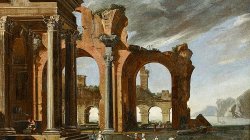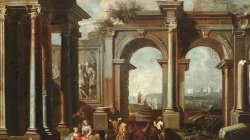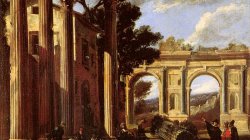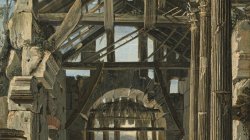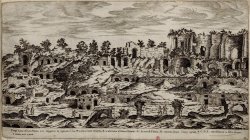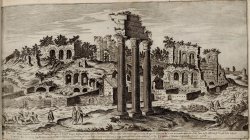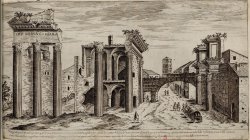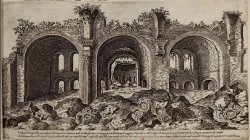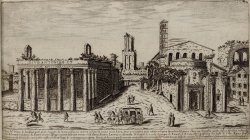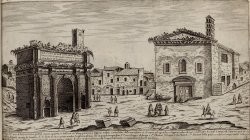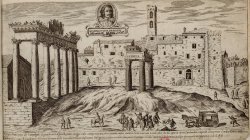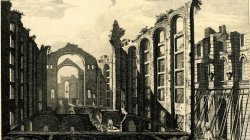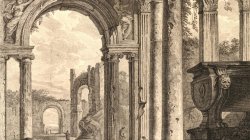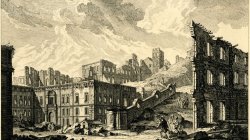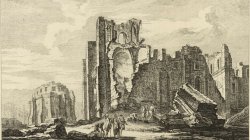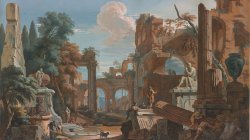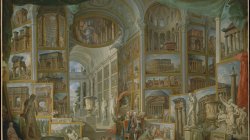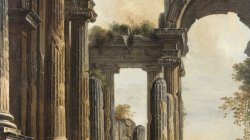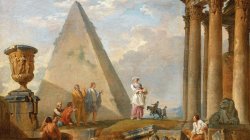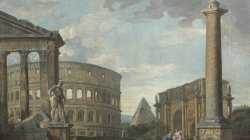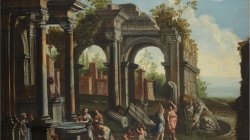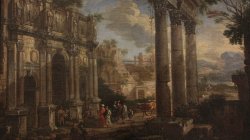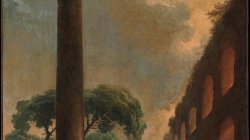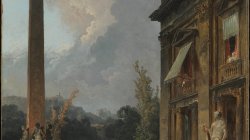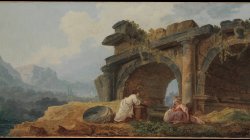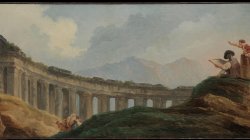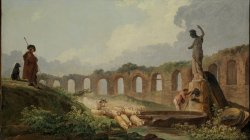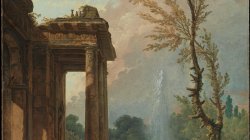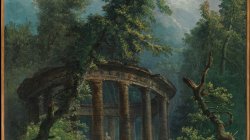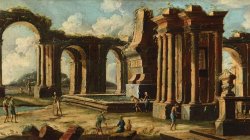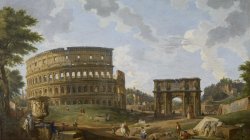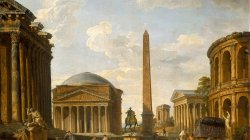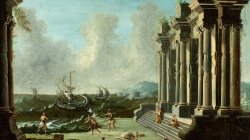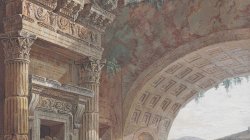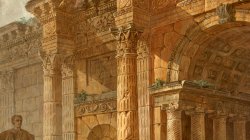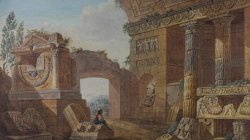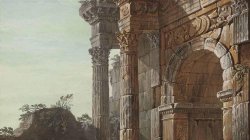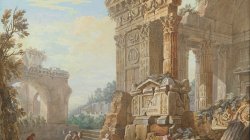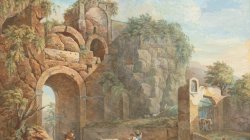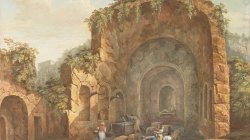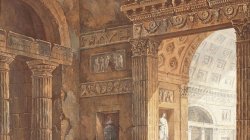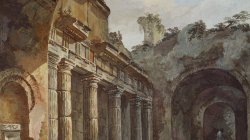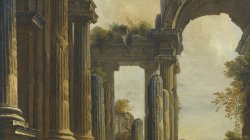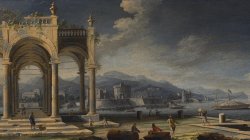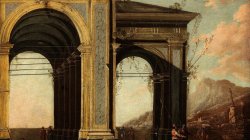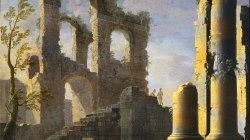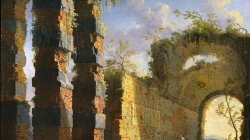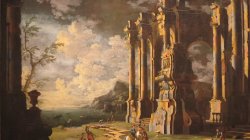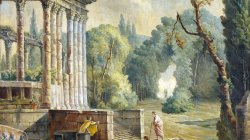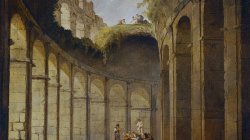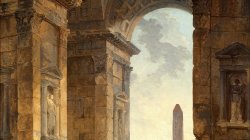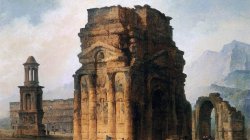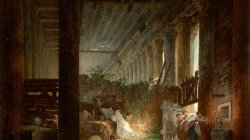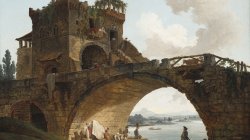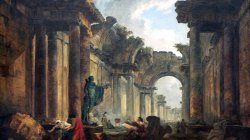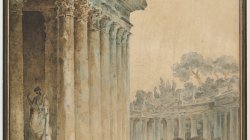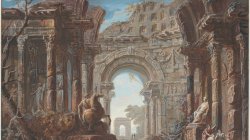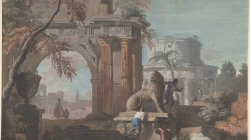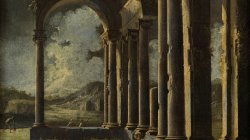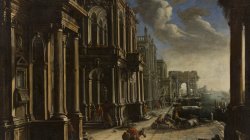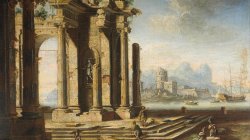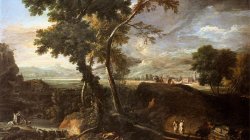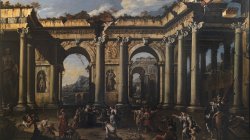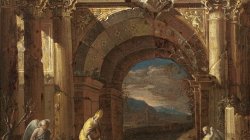Capriccio Ruin Artists
The items displayed on this page are being displayed from child categories.
Viviano Codazzi (1604-1670)
Viviano Codazzi (c. 1604 – 5 November 1670) was an Italian architectural painter who was active during the Baroque period. He is known for his architectural paintings, capricci, compositions with ruins, and some vedute. He worked in Naples and Rome. He is known in older sources as Viviano Codagora or il Codagora.
- Media items
- 4
- Comments
- 1
Charles-Louis Clérisseau (1721-1820)
Charles-Louis Clérisseau was a French architect, draughtsman, antiquary and artist who became a leading authority on ancient Roman architecture and Roman ruins in Italy and France. With his influence extending to Russia, England, and the United States, and clients including Catherine the Great and Thomas Jefferson, Clérisseau played a key role in the genesis of neoclassical architecture during the second half of the 18th century.
- Media items
- 11
- Comments
- 1
Leonardo Coccorante (1680-1750)
Leonardo Coccorante was an Italian painter known for his capricci depicting imaginary landscapes with ruins of classical architecture. He is best known for his large highly detailed landscapes with imaginary classical architectural ruins. He often included small figures in the foreground to emphasize the expansiveness of the ruins. Coccorante is classified as a veduta (vista) painter.
- Media items
- 3
- Comments
- 0
Étienne Dupérac (1525-1604)
Étienne Dupérac (aka Stefano Duperac) was a French architect, painter, engraver, and garden designer.[1] He is most well known for his topographical studies of Rome and its ruins in the late 16th century.
- Media items
- 7
- Comments
- 0
Gennaro Greco (1663-1714)
Gennaro Greco also known as "Il Mascacotta" was an Italian architectural painter who was active in Naples during the late Baroque period. He is known for his architectural paintings, capricci, compositions with ruins, as well as his vedute. His vedute fall mostly in the category of the so-called vedute ideate which represent closely observed views of completely imaginary landscapes
- Media items
- 5
- Comments
- 0
Jacques-Philippe Le Bas (1707-1783)
Le Bas was engraver to the Cabinet du Roi and successfully produced engravings after several paintings by different artists.
- Media items
- 5
- Comments
- 1
Ascanio Luciano (1621-1706)
Details about his life are scarce. He is believed to have been born in Naples in 1621. When the architectural painter Viviano Codazzi took up residence in Naples in 1634, Luciano was just 13 years old. It is believed that Luciano trained with Codazzi before Codazzi left Naples around 1650. The basis for the assumption is that Luciano's early works are very close in style to those of Codazzi to the point of often being confused with works of his presumed master. In 1665 Luciano became a member of the Congregation of painters of Ss. Anna and Luca. Luciano lived until a very old age and died in Naples on 18 August 1706.
- Media items
- 4
- Comments
- 0
Giovanni Paolo Panini (1691-1765)
Giovanni Paolo Panini or Pannini was a painter and architect who worked in Rome and is primarily known as one of the vedutisti ("view painters"). As a painter, Panini is best known for his vistas of Rome, in which he took a particular interest in the city's antiquities. Most of his works, especially those of ruins, have a fanciful and unreal embellishment characteristic of capriccio themes. In this they resemble the capricci of Marco Ricci.
- Media items
- 5
- Comments
- 0
Marco Ricci (1676-1730)
Italian painter of the Baroque period. He was born at Belluno and received his first instruction in art from his uncle, Sebastiano Ricci, likely in Milan in 1694–6. He left for Venice with his uncle in 1696, but had to flee the city after killing a gondolier. He visited Rome, where he was for some time occupied in painting perspective views. In 1706–7, he worked with his uncle on the decoration of the Sala d'Ercole in the Palazzo Fenzi, located in Florence. Ricci's propensity for collaboration with other artists makes his early style difficult to trace, but it is generally agreed that his influences included Claude Lorrain, Gaspard Dughet, and Salvator Rosa, along with a naturalistic style of landscape painting practiced in the Veneto in the 17th and early 18th centuries.
- Media items
- 3
- Comments
- 0
Hubert Robert (1733-1808)
Hubert Robert was a French painter in the school of Romanticism, noted especially for his landscape paintings and capriccio, or semi-fictitious picturesque depictions of ruins in Italy and of France.
- Media items
- 16
- Comments
- 1
Alessandro Salucci (1590-1655/60)
Italian painter who played an important role in the development of the genre of cityscapes (vedute) of Rome. Very little is known about Alessandro Salucci's early life and training. He is believed to have been born in Florence in 1590. The first written record of the artist dates from 1628 when he is mentioned in connection with other artists in Rome. Salucci completed important public and private commissions in Rome.
- Media items
- 2
- Comments
- 0
Giovanni Niccolò Servandoni (1695-1766)
Born in Florence and trained in Rome, Servandoni went to Paris in 1724. A versatile artist with a strong knowledge of perspective and antiquity, he found success in a variety of fields, from theater design to courtly festivals, with their fanciful temporary structures. Although he was not formally trained in architecture, he won the 1732 competition to design the façade of Saint Sulpice, which earned him the title Architecte du Roi. He also produced paintings in oil and gouache. They are typically architectural capricci that recall the layered perspective of stage sets, as here, where a crumbling archway frames a distant view of a triumphal arch.
- Media items
- 3
- Comments
- 2


